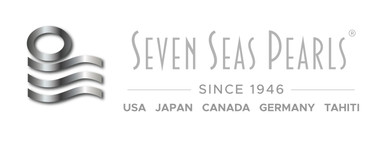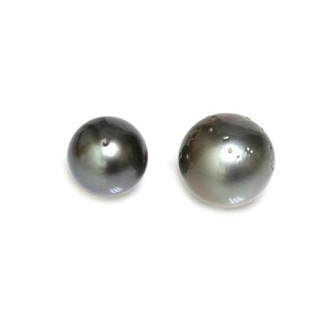How Pearls are Graded by the Industry and by Seven Seas Pearls
23rd Apr 2021
If you read our last blog, then by now you probably have a solid basic understanding of how pearls are graded and some of the criteria involved in determining the grade that a pearl receives. In our last blog, we highlighted the similarities and differences between how pearls and diamonds are graded. As we previously mentioned, universally, pearls are graded as a whole piece. At Seven Seas Pearls, each pearl is graded by the individual criteria – luster, nacre and surface clarity and then averaged out for an overall grade. Additionally, we have added an additional category of grading pearls that are flawless, have the best possible luster and have the best possible nacre. Our method of grading ensures that our clients fully understand the exact quality of the pearl they are receiving.
The most common method of grading pearls in the industry is the AAA-A pearl grading system. As could be inferred from the name (AAA-A) pearls with a rating of AAA are considered to be the highest quality. These pearls are virtually flawless and will have a very high luster and excellent nacre (more on that later). At least 95% of the pearl surface will be free of defects.
At Seven Seas Pearls, we have added an additional category for the pearls that are flawless, have the best possible luster and nacre. For pearls that have 99.9% of their surface free from defects, we rate these pearls AAA Flawless. Pearls that have the best possible luster for that type of pearl are rated AAA Gem, and if the nacre is excellent, it is rated “top”. For example, according to the way Seven Seas Pearls grades pearls, the best possible pearl would be rated AAA Flawless for surface clarity, AAA Gem for luster and Top for the best nacre. In comparison to other rated pearls, they would receive a grade of AAA. Essentially, our grading system gives the buyer much more valuable information about the quality of pearl they have purchased. Moving forward, we will be referencing the AAA-A grading system with additional criteria (Flawless, Gem and Top) that we have added to it at Seven Seas Pearls.
This is an excellent example of an AAA Flawless rated pearl (on the left) and an A rated pearl (on the right). Can you see the difference in the surface clarity and luster?

Pearls that have a grade of AA will also be very high in luster. The main difference between a pearl with a grading of AAA vs AA will be the surface defects. Pearls with the grading of AA will have at least 80% of the pearl surface free from defects.
Below is an example of two pearls one that is rated AAA and one that is rated AA. As you can see, the AAA rated pearl (one on the left) has a much cleaner surface and is free from defects. The AA rated pearl (the one on the right), while still stunning, has more surface defects than the AAA rated pearl.

The lowest jewelry grade pearls will receive a grade of A. These pearls have significantly less luster and more than 25% of the pearl’s surface will have defects. Sometimes, pearls with a grading of “A” will be used in a piece of jewelry to camouflage the defects. Essentially, this allows people to purchase a beautiful piece of jewelry for a lower price.
Typically, at Seven Seas Pearls we do not offer pearls with the grading of “A”. While pearls with this grading are still beautiful, it is not the caliber of pearl we wish to offer our clients. Pearls with a rating of “A” will have surface defects of more than 35%. Additionally, the luster will be poor and the nacre will be thin. Below on the left is a AAA rated pearl and on the right is an “A” rated pearl. Can you see the difference in the luster and the surface clarity?

In our next blog we will outline the importance of having the pearl clarity, nacre and luster graded separately and why this is an important consideration when buying a piece of pearl jewelry. Check back soon!
Note: I know that additionally there id AA+ and A+ in the grading system. This blog was already almost double the length it should ideally be, and I didn’t think that adding the additional two tiers was necessary since we are covering the basics. If you disagree, just please let me know and I’ll put it in. Thanks!

